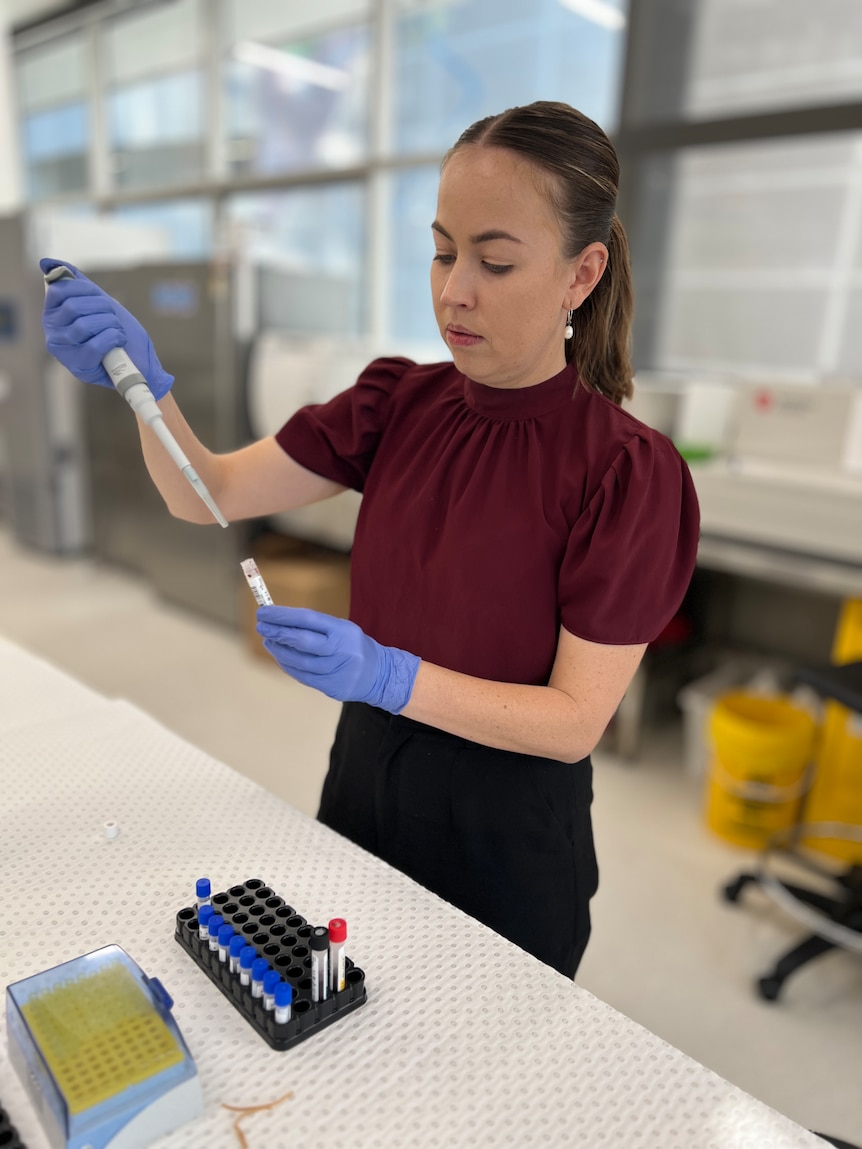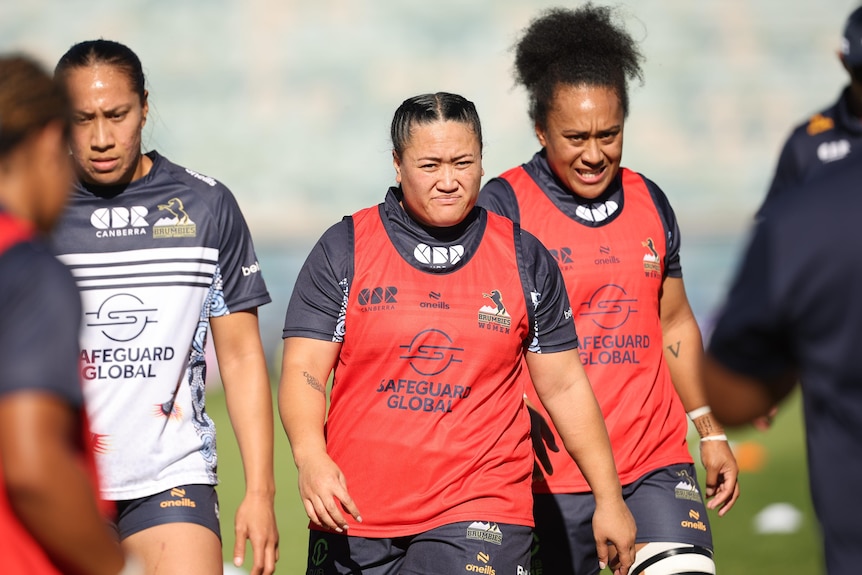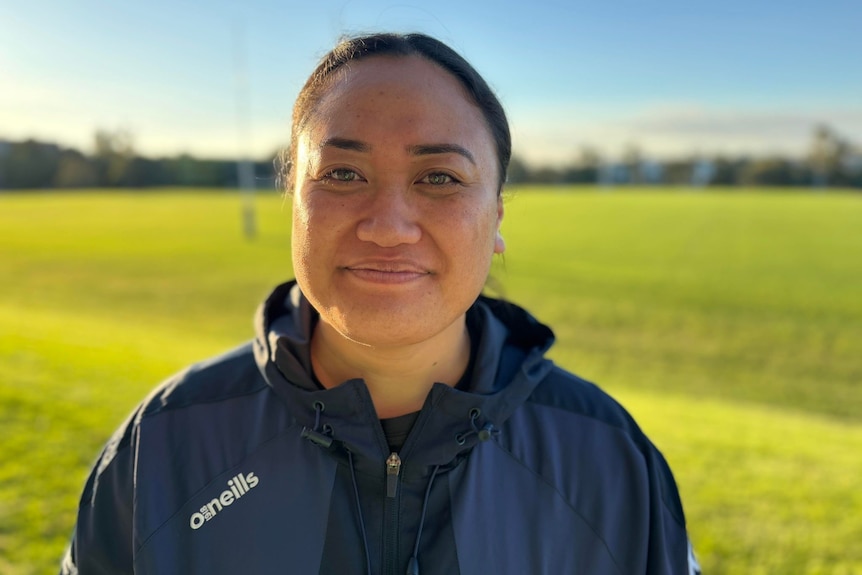Table of Contents
Rugby union prop Sally Fuesaina has the strength to set up a scrum, break tackles and run over her opponents to crash over the try line.
But the energy he seems to have on the field isn’t always a reflection of how his body is coping.
“I could be on the field trying to move, but there’s not enough blood and oxygen flowing in my body to perform well,” Fuesaina said.
“It gets frustrating because sometimes I think ‘is it my performance or is it my iron? Which is it?'”
Fuesaina describes herself as a normal 32-year-old mother of two children, who works in caring for the elderly and disabled.
He also makes several five-hour round trips from Sydney to Canberra each week so he can play and train for the Brumbies.
Her standout season in this year’s Women’s Super Rugby competition led to her being selected in the Wallaroos team for the first time.
So feeling tired all the time was something she thought was due to her busy life and many commitments.
Low iron levels explain excessive fatigue
Fuesina grew up in a Samoan home where cultural and financial limitations meant iron-rich foods, like red meat, were off the menu.
“I don’t come from a very rich family, so it’s like ‘buy what you can for your family,'” Fuesaina said.
“We pretty much only ate white meat and didn’t really buy red meat because it was more expensive.”
Constantly feeling tired was something I thought I had to live with.
“Sometimes I would just come home from work and fall asleep right away…I was really exhausted,” she said.
It wasn’t until she underwent a routine blood test while pregnant with her first child that doctors were able to provide an answer.
“They told me I had too little iron and if I didn’t keep up I would need an iron infusion,” she said.
“[I thought] Is that why I’ve been sleeping all the time after training sessions?”
Iron deficiencies are common in female athletes
On average, about one in three female athletes is iron deficient, compared to just one in 10 male athletes.

The striking difference in how iron deficiency affects male and female athletes is what Australian Catholic University postdoctoral researcher Alannah McKay has been researching for about eight years.
She said menstruation was the biggest contributing factor.
“We lose iron when we menstruate, so every time we have a period, we have blood loss that is associated with iron loss,” Dr. McKay said.
“So that’s a significant gap in terms of how much more iron women need to eat each month to replace the amount of iron they lose.
“The other potential cause is fluctuations in hormones such as estrogen and progesterone, which can affect our ability to absorb dietary iron.”
How does a lack of iron affect sports performance?
Lack of iron produces fewer red blood cells, which affects the amount of oxygen carried through the body to the muscles.
Exercise also causes hormonal disruptions that limit the body’s ability to absorb iron from the diet for about six hours after exercise.
Therefore, it impairs the athlete’s aerobic capacity and fitness, meaning they often become fatigued.
But relying on fatigue symptoms to indicate whether someone is iron deficient is particularly difficult for female athletes, like Fuesaina, who juggle so many commitments.
Dr. McKay said she often saw athletes confused about the warning signs.

“When I say to somebody ‘do you know you have really low iron stores? Are you feeling any symptoms? Are you fatigued?'” she said.
“They say ‘oh, but I’m always tired, I have all the burden of working a full-time or part-time job, I have a family at home that I have to look after, and then on top of that I have to train … I’m just tired whether my iron is healthy or not.”
Dr McKay said people’s upbringing and access to food could also have an impact on their iron levels.
“If you’re talking also in terms of socio-economic status, or regions that are lacking in red meat, that is also going to have a big effect on how much iron you’re obtaining from the diet,” she said.
Increased screenings could help
Athletes in elite programs are encouraged to have regular screenings for iron deficiency.
In some cases. that could take place up to three times a year.
But Dr McKay said screening shouldn’t be limited to just professional athletes.
“Anybody that’s exercising regularly may need to have their iron screened a little bit more frequently, particularly females,” she explained.
“You could be at risk of an iron deficiency even if you’re just training three or four times a week, particularly running.”
While iron cannot be produced by the body, Dr McKay said the hundreds of supplements on the market could be confusing, and consulting with a dietitian or GP was the best option to see improvements.
“Many [supplements] they will not be effective in treating an iron deficiency [as] There are very few who have enough iron,” he said.
“So it’s important to have very good advice about what supplements to take because you can choose a supplement that is ineffective or that is classified more as a multivitamin that could have a risk of contamination from an anti-doping point of view.”
Aware , updated

